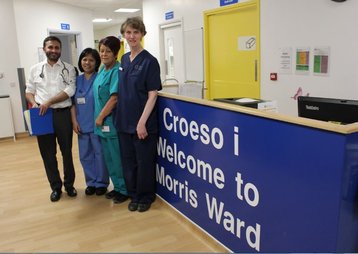Digitization has permeated almost every sector of society, and the healthcare industry is no different. We’re so much more reliant on digital data. Health records are moving away from reliance on physical documents towards digital files. Healthcare devices are increasingly networked with each other. Booking and scheduling systems are now, in most cases, fully migrated to the cloud.
These developments have made accessing health records far easier, meaning more accurate and timely diagnoses and treatments. However, they have also brought new challenges for hospital trusts when it comes to protection and recovery of sensitive data.
Wider societal changes such as an ageing population also make a difference. We’re set to see more demands on the health service, and more data being generated, stored and accessed. Consumers are getting used to accessing their private data to make appointments on a variety of services. It all means big pressures in terms of keeping data safe and accessible.
Traditionally, UK healthcare IT teams have been faced with a long list of time-sensitive spending priorities. They have been under major pressure to modernize infrastructure and build foundations that will help make the NHS more agile and data-driven. The consequences? Administrative investments like data protection and disaster recovery have become an afterthought.
This can no longer afford to be the case. Regulators are flexing their GDPR muscles, critical patient care systems are relying more on IT, and the volume of sensitive personal data is growing rapidly. The question remains what should organizations be prioritizing first in terms of their data strategy?
Disaster recovery is inseparable from uptime
While the cloud can help reduce infrastructure costs, many service level agreements (SLAs) do not offer guarantees around availability. As a result, it continues to fall to IT staff to make sure a backup and disaster recovery plan is in place should the worst happen. It’s the first step towards being able to guarantee that systems will remain always available.
Having these plans in place not only ensure consistent quality of service for patients, but they are also integral to the operation of a modern hospital environment. As the NHS becomes more data-driven, the onus is on hospitals to build resiliency into their IT systems and ensure they are compliant with service and data protection legislation.
In an environment as target-driven as healthcare, operational data is a lifeline to service improvement, funding and problem-solving. It is a similar story across many kinds of organizations - 44 percent of business and IT decision makers in the 2019 Veeam Cloud Data Management report stated that more sophisticated data management is critical to their organization’s success over the next two years.
The health service is trying to tackle this. NHSX, one of the largest digital health and social care transformation programs in the world, is one example. The target is to modernize, reduce the burden on clinicians and staff, and improve patient safety.
Recovery plans help put patient care first
Using technology to enhance patient care is more secure when there’s a comprehensive disaster plan in place One example is the £250 million recently announced for the development of Artificial Intelligence (AI) within the NHS. Using these technologies to speed up diagnoses or better estimating future needs is one thing, but none of this can happen without making sure the underlying data is always on hand.
Life expectancies are only going to improve. The greater demand on A&E departments and GPs are only going to pile on further strain. Harnessing emerging technologies is a great way to help tackle this problem and make the NHS more robust. Disaster recovery and backup measures must become a top priority to avoid further breaches of patient trust and confidence. It also creates the best conditions for this tech use to thrive.
Ultimately the priority of any healthcare professional is to offer the best possible service to patients. With the data they need always available at their fingertips, they are in a perfect position to do so. Should the worst happen, patient care doesn’t deserve to take a hit.




